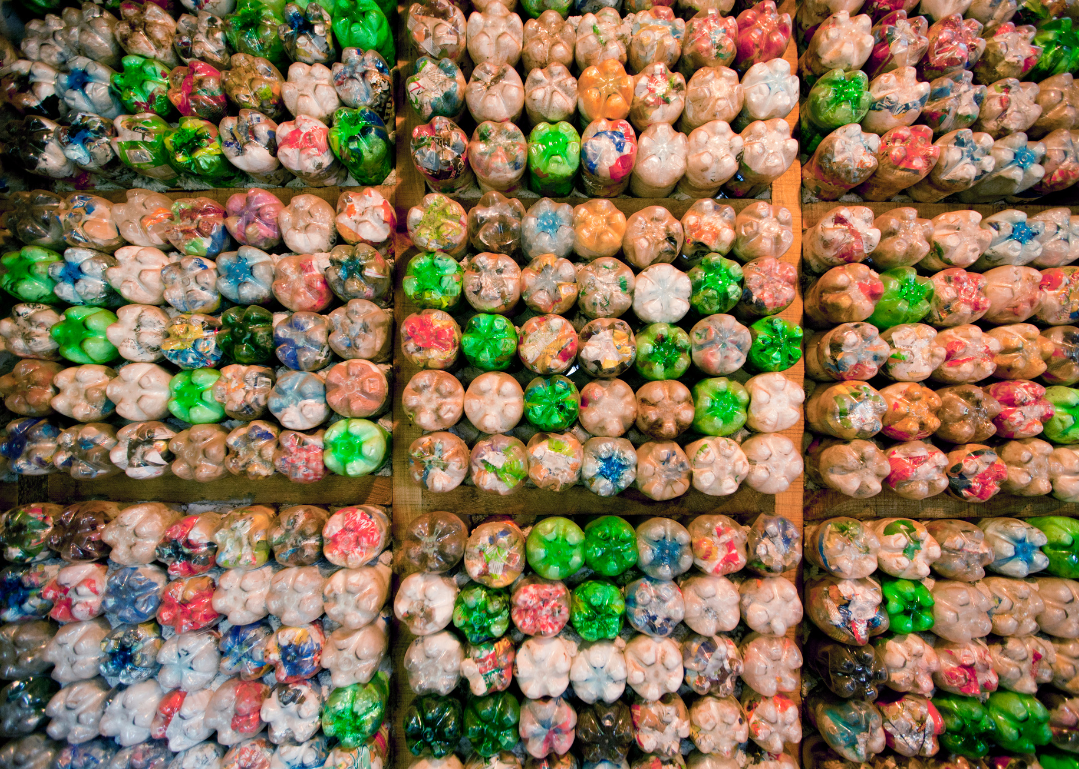
Canadians throw away about three million tonnes of plastic every year, with only 9% actually being recycled, according to the Government of Canada. As more and more people become mindful of the effect their choices have on the environment, solutions that help to mitigate climate change continue to grow in popularity, and ecobricking is one of those methods.
In keeping with guidelines from the Global Ecobrick Alliance—a group that has been forging the way in plastic transition—ecobricks transform used plastic into reusable building blocks that can be used to construct furniture, food-forest gardens, parks, and indoor modules like beds, tables, and chairs. They’re also an eye-opener when it comes to fully understanding how much plastic we use on a daily basis.
As well as contributing to addressing plastic pollution on a global scale, ecobricks can have a positive impact locally, which means DIYers can get involved by making their very own!
Given machinery, a specialized skill set, or expertise are not required, ecobricks can be made by virtually anyone who has an interest in joining a community of people who endorse regenerative living. The term “regenerative” differs from “sustainability” in that it involves transitioning from, as opposed to sustaining, our current ecosystems.

What are ecobricks?
Ecobricks are made from clean, dry plastic that’s solidly and densely packed into single-use plastic bottles. The weight versus the volume of the brick is a barometer for its quality. The volume of the bottle should be filled in its entirety so no space or air is left inside and the density must be above 0.33 g/ml to ensure its lifespan and avoid any chance of future constructions that use ecobricks being compromised.
According to the Global Ecobrick Alliance, “a 600ml bottle must be above 200 grams and a 1500 ml bottle must be above a weight of 500 grams. Experienced ecobrickers tend to regard 0.37 g/ml and above as the range of a good ecobricks.”
Once ecobricks pass the weight test, they’re sealed and logged with a serial number generated via the GoBrik app. Ecobricks should be stored indoors and away from the sun until you have enough for your project!

How can you create your own ecobricks at home?
When done correctly, ecobricking can become an eco-friendly long-term habit that can help cut down on the waste we put into the environment! Check out the steps below to begin your ecobricking journey.
Start saving your plastic
Segregate, clean, and completely dry any non-biodegradable plastic you want to use.
Choose a specific bottle and stick with it
When it gets to the building stage, using identical bottles is imperative for stable modules and structures. So, if you know you drink a lot of a certain brand of juice, water or pop, commit to using those bottles for your future ecobricks.
Get your packing stick
Often referred to as the “magic wand”, choose a bamboo or wooden stick that isn’t sharp, since you don’t want to pierce your bottle—if you do, you’ll be forced to start again. Go for a stick that’s at least twice the height of your bottle so you can easily pack in all the plastic!
What colour will you choose?
Think of how these bottles will be used in modules and structures. Use solid colours at the bottom of the bottle to assist with patterns for structures like ecowalls.

Tightly pack your bottles
Cut or rip larger plastics into smaller pieces that can be packed into the bottle with your packing stick. Mix soft then hard plastic for optimal density.
Weigh your ecobricks to ensure quality
A reminder, an ecobrick’s minimum weight is its bottle volume x 0.33. A kitchen scale will come in handy here!
Log your ecobrick details
Record your name, the final weight, the date and year, the intended project, and the Serial Number (generated by the GoBrik App). Logging helps keep track of how much waste is saved!
Safely store your ecobrick
Store your ecobricks in a dry place indoors and cover with a cloth to protect them.

How you can use them
While ecobricks aren’t an officially recognized building material for actual structures or buildings in Canada, they can be a unique way to build things for personal use around your home or yard.
A common use for ecobricks is as the base for raised garden beds since they’re packed tightly and can bear a decent amount of weight. Line or stack the bottles in the shape you’re looking to make your garden, then cover them in clay or concrete to make a solid structure. They can also be used as the base of large planter boxes to prop up the soil.

The same method of sealing with concrete should be used if you’re building something a little more substantial, like a patio table or end table.
One school in Calgary decided to get a little creative with their ecobricks and built a couch using 157 ecobricks! Think of the possibilities for playroom furniture, patio furniture, or even just a unique coffee table that’s sure to start a conversation.
Ecobricks offer a solution to dealing with plastic waste. Though ecobricks won’t solve all our plastic problems, they are a small step towards a regenerative way of living.
Courtesy: realtor.ca
Posted by Infinity Admin on
Leave A Comment